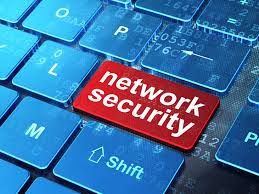Network Security Basics
Back to the basics. As more and more threats pile on and the level of complexity increases, the ways you can protect your organization doesn’t have to be difficult. Basics are just that, basic and simple. Relentless cyber criminals, disgruntled current and former employees and careless users can bring down your computer networks and compromise data. Network security encompasses your hardware, software, policies and procedures designed to defend against both internal and external threats to your company’s computer systems. Multiple layers of hardware and software can prevent threats from damaging computer networks, and stop them from spreading if they slip past your defenses.

First thing to do is educate yourself on what some of these threats and common harmful mistakes are:
- malicious programs like a virus, worm, malware, spyware, etc.
- hacker attacks
- ransomware and data theft
- unsecured wireless networks
- unpatched software and hardware
- unsecured websites
- weak passwords
- lost devices
- unwitting users
Important steps you can take:
- Keep patches current. Old systems are more vulnerable to viruses or infiltrations, current patches ensure your software systems are secure.
- Use strong passwords. Make sure that employees have individual and unique passwords and are changed often.
- Have a secure VPN. Data encryption and identity authentication are needed to have a secure VPN. Any open network connection is a vulnerability that hackers can exploit to sneak onto your network. Bonus tip: use a firewall to separate the VPN network from the rest of the network.
- User right management. Inappropriate user-access privileges pose a significant security threat. Managing employee access to critical data on an ongoing basis should not be overlooked.
- Active account management. Hackers use inactive accounts, the ones that were assigned to contractors and former employees, to gain access and disguise their activity. Simple philosophy: only keep active user accounts active.
Network security doesn’t have to be hard. Apply the basic principles: protection, detection, and reaction. Protection: configure your systems and networks properly. Detection: identify any configuration changes and network traffic issues. Reaction: respond to any problem and get your network back to stable. And finally, the last basic knowledge for network security you need to implement, chose a security partner that knows their stuff. 2W is an IT Consultant that has security experts on staff that can provide 24/7 performance monitoring of all critical network devices, routine security updates, patch management, and preventative maintenance. Contact us today to learn more.
Read More:
Four Tips to Protect Against Ransomware
Where is Your Data?
Five Myths of a Reliable Tape Backup Whitepaper
Enjoyed reading this article? Click the button below to download this asset.
Download “Five Myths Whitepaper” Now
Five Myths of a Reliable Tape Backup Whitepaper
Please complete the form to download the file.